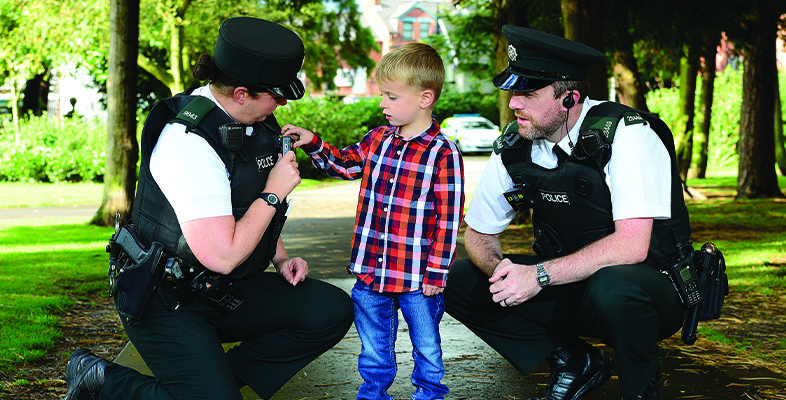6.1 A difficult conversation (revisited)
Remember the example from Activity 1, the difficult scenario of the unfriendly community member in a meeting? Now would be a good time to re-read the example and have a look back at the responses that you noted at the start of the course. In the activity below, you will compare your responses to what you now know, having developed more knowledge about the model.
Activity 9 Reflecting on your responses to Activity 1
In Activity 1, you were asked the following questions about this scenario. Knowing what you now know about the interpersonal circle model, how would you answer the questions now?
- Putting yourself in the role of the community police officer, what would you want to get out of the situation?
Your original response was:
Your response now:
Discussion
It is likely that the answer to this question probably hasn’t changed as a result of the course, in that you would probably want to be able to open up conversation with the community member to try to find out what’s behind their reaction. And you’d want to do this quickly, so that you might resolve it quickly too.
- How would you ‘diagnose’ the behaviour of the community member towards you? What behaviours do you think they are displaying towards you?
Your original response was:
Your response now:
Discussion
Given what you’ve learned in this course, you probably now have a different vocabulary for your diagnosis. It’s likely that you will diagnose their behaviour as being very clearly hostile, maladaptive and slightly submissive. To be even more specific, it is both punitive (punishing you for being a police officer) and unfriendly (‘I’ve got nothing to say to you’).
- What do you think might be the reasons for them responding that way? Try to generate a few different ideas about what might be going on for them to have reacted this way.
Your original response was:
Your response now:
Discussion
Their response might be rooted in deeply held negative beliefs about the police, or they might have had personal bad experiences regarding the police. It might also be caused by something much more contextual – for example, they’re having a bad day, they’re in a bad mood and don’t want to talk generally – or it might be that they don’t want to be seen by others to be talking to you. To find out which of the above explanations (or others) might be the case, you will need to listen to them to find out more. There may be political or religious reasons underpinning their attitude towards you.
- Spend a couple of minutes thinking about what you might want to say in reply and why. What are the exact words you would want to say in response?
Your original response was:
Your response now:
Discussion
Given what you’ve since covered in the course, you are now more likely to be much clearer about how to go about planning a response to the community member.
What is my risk area?
You will by now be aware of the risk of enacting hostile maladaptive behaviour back to the community member, firstly because you know that hostile behaviour from someone often invites it back and secondly because maladaptive behaviour can often encourage the other person to act maladaptively too.
How do I translate that to an adaptive response?
You will also be aware that the adaptive response to someone being hostile and submissive is to be confident, assertive and certain. You might choose to say something along the lines of, ‘I’m sorry to hear you say that. From what you’ve just said, it sounds like you don’t want to talk to me because I’m a police officer. I’m curious to understand why, though, and even if you might not think I want to hear what you have to say, I would nevertheless be interested to find out why you feel that way.’ By saying this, you will have diffused their hostility, denying it the opportunity to escalate, and you will have asserted a clear desire to engage with and listen to them. You will have shown that you have already heard the important part of their message (i.e. the fact that you’re a police officer) by repeating it back to them. Importantly, you will have avoided showing any hostility for them to react to, thus diffusing the potential for a hostile interaction to get more intense. In short, you will have told them – without any emotion on your part – that you want to listen to what they have to say.
